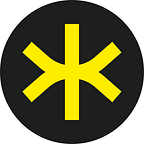Jumping into the app development without the UX discovery phase is akin to setting sail in murky waters without a map. This stage is where the design preparation magic happens, laying the groundwork for your project’s success. It’s about knitting together the very fabric of your business goals, digital product vision, and user needs as a foundation for a consistent design. By engaging deeply at this stage, you transform your app from being just another digital entity to a standout piece of innovation and usability.
Why Embrace Discovery UX Research?
The UX discovery phase acts as the project’s compass, guiding you away from the all-too-common pitfalls that can derail even the most promising apps. It’s your first line of defense, ensuring that every aspect of your product is tailored to meet the real, expressed needs of your users.
With activities ranging from user research to technical assessments, this phase sharpens project focus, aligns team vision, and prevents overruns in budget and time.
Assembling the Dream Team
Success in this phase relies on a dream team composed of UX researchers/designers, a visionary team leader, a committed project owner, savvy technical experts, and other specialized talents. Together, they form the backbone of a process aimed at ensuring your project starts on the right foot, with clarity, direction, and purpose.
Goals, Deliverables, and the Road Ahead
The deliverables from the UX discovery phase — ranging from user flow maps and wireframes to interactive prototypes — provide a concrete basis for understanding your project’s trajectory.
This overall discovery phase is about setting clear goals, defining deliverables, and establishing a comprehensive roadmap that includes everything from product vision to MVP planning. Design is an integral component as well.
Methods and Questions
Combining qualitative and quantitative research methods, the UX discovery phase delves into the what, why, and how of user interaction, behaviors, and expectations. Through a blend of interviews, surveys, and data analytics, key questions about the user, project goals, anticipated challenges, and technical requirements are explored and answered. Altogether, this leads to better and more to-the-point design decisions.
A Quick Overview of the UX Discovery Process
Each step in the UX discovery phase, from stakeholder interviews to prototyping, is designed to minimize risks and ensure your product is perfectly aligned with both market demands and user desires.
- Stakeholder interviews: engaging with key figures in the company to understand business goals and visions.
Outcome: a clear understanding of business objectives and stakeholder expectations. - User research: conducting surveys and observations to understand user needs and behaviors.
Outcome: detailed user personas and insights into user needs that guide design. - Competitive analysis: analyzing competitors to identify the strengths and weaknesses of their designs.
Outcome: insights into market trends in terms of design and opportunities for differentiation. - User journey mapping: mapping out the user’s interaction with the product to identify key touchpoints.
Outcome: an overview of the user’s experience, highlighting areas for improvement. - Usability evaluation: testing the usability of products or prototypes with users to identify issues.
Outcome: feedback that informs usability enhancements. - Information architecture (IA): organizing content and data to support usability.
Outcome: a structured content framework that enhances user navigation. - Workshops and ideation sessions: collaborating to brainstorm solutions based on research findings.
Outcome: innovative ideas for product design and development. - Requirements gathering: defining the project’s features, functions, and technical requirements.
Outcome: a comprehensive requirements document that guides design and development. - Prototyping: creating early versions of the product for testing concepts.
Outcome: early validation of design concepts and a basis for further refinement. - Analytics review: analyzing user interaction data to identify patterns and issues.
Outcome: insights that inform design decisions and feature improvements.
Your Journey to Impact Begins Here
The UX discovery phase is the foundation upon which impactful, user-centric products are built. It represents an investment in deeply understanding your audience, ensuring that your project is poised for success from the outset.
By getting the most of the discovery process, your vision can evolve into a digital solution that resonates with users and stands the test of time. Keep reading to find more insights and tips:
